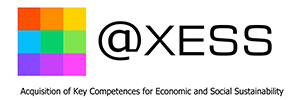
Acquisition of Key Competences for Economic and Social Sustainability
Interacting through digital technologies
Keywords
Bibliography
Keywords
Digital technologies, netiquette, security, sharing, cloud storage
DescriptionIn this course, we will introduce the concept of netiquette on the net and its rules. In the second unit, we will present some tips and recommendations to protect your devices, and finally in the last unit we will explore some interesting sharing options based on digital solutions.
- http://blog.continental.edu.pe/uc-virtual/la-netiqueta-y-sus-10-reglas-basicas/
- http://www.gadae.com/blog/cuales-son-las-claves-para-proteger-la-seguridad-de-tu-ordenador/
- http://www.gadae.com/blog/mantener-seguridad-ordenador/
- https://www.adslzone.net/2016/06/02/las-15-mejores-herramientas-compartir-archivos-directamente-sin-subirlos-la-nube/
- https://forum.interia.pl/
- https://www.prawo.ws/
- http://prawo.sejm.gov.pl/
- https://ist.mit.edu/security/devices
- https://en.wikipedia.org/wiki/Malware
- https://en.wikipedia.org/wiki/Social_engineering_(security)
- https://europa.eu/youreurope/citizens/consumers/internet-telecoms/data-protection-privacy/index_en.htm
- https://www.tripwire.com/state-of-security/security-awareness/5-social-engineering-attacks-to-watch-out-for/
- https://econsultancy.com
- https://cdburnerxp.se/help/appendices/disctypes
- https://petapixel.com/2012/10/10/why-hard-drives-and-memory-cards-have-less-space-than-advertised/
- http://www.dw.com/en/using-digital-technologies-for-freedom-of-expression/a-19116226

















